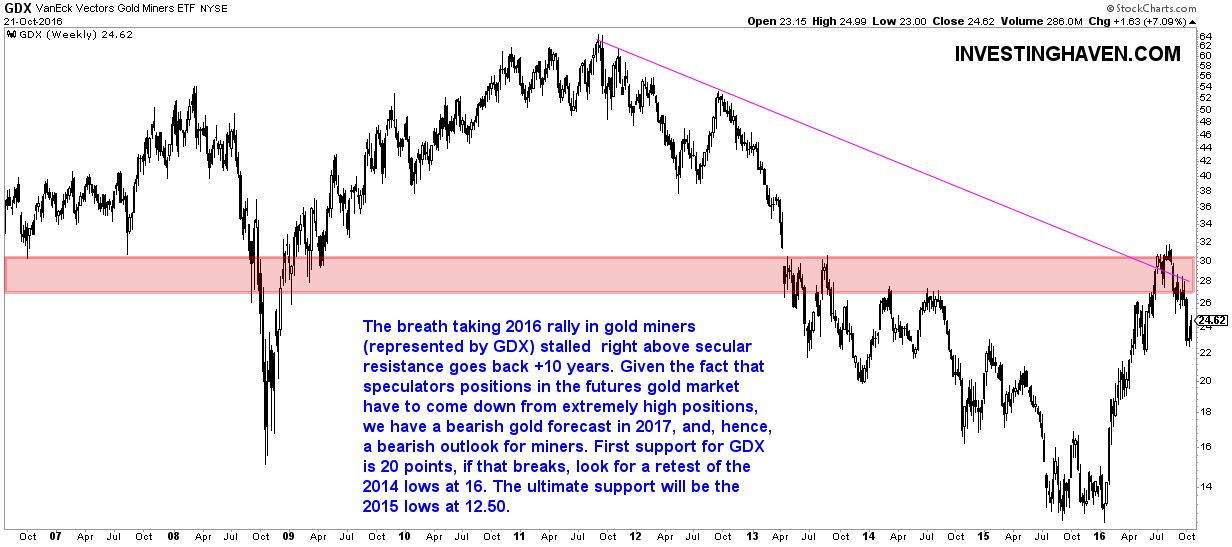The gold mining space performed incredibly strong in the first half of 2016. But will the gold space perform as strong in 2017? In other words, what is our gold miners forecast for 2017?
The WSJ was quite optimistic earlier this year, with this bullish gold miners forecast.
And if we had to believe this analyst on CNBC, he would have already flashed a buy signal a couple of weeks ago, as his gold miners forecast was based was based on the GDX testing its 50 day moving average, a technical indicator which averages prices of the previous 50 trading days. Though technical indicators are not a bad thing as such, its value is really limited as a stand-alone indicator.
Technical indicators are not sufficient in our view. We find much more value in the combination of chart patterns with intermarket dynamics.
Before we look into the chart and intermarket indicators, we want to stress that gold miners had a breath taking performance in 2016. Readers will remember that we shared 7 bullish gold mining investment tips which worked out pretty well. However, 2017 is setting up to be different.
Forecast for gold miners in 2017: secular bear market will continue and bottom out
Our general market view is based on intermarket dynamics. As explained in The Primary Market Trend Of 2017, we see a “risk on” sentiment driven by rising rates. Because of that, we expect gold to underperform.
The “issue” with gold is that it has several “faces.” On the one hand, gold is a fear asset, performing well as fear enters the market; case in point, the spectacular rise in the gold market early 2016 when the bottom seemed to be falling out of stocks and crude. On the other hand, gold is an inflation asset, performing well as inflation expectations rise.
So the trick is to understand which face gold is showing.
Given our 2017 outlook, we believe gold will be lead by fading fear in the short and medium term. Arguably, inflation expectations will rise given the recent bullish crude oil price behavior. However, the strong dollar is not confirming that trend, so we believe gold will not be driven by inflationary pressure, but rather by a lack of fear.
With that in mind, let’s verify whether this viewpoint is confirmed by the chart and its pattern(s). To that end, we look at the very long term chart.
Unfortunately for gold bulls, the chart looks bearish. The 2016 rally stalled exactly at secular resistance, the 30 to 32 area, which is (1) exactly 2007 support and (2) the breakdown level of 2014 (since then, huge resistance as seen on the chart).
The chart pattern confirms expected intermarket dynamics, which makes for a bearish 2017 forecast for gold miners. We expect gold miners to test the 2014 lows, and, if those lows give away, the 2015 lows. However, we also believe that will be the ultimate retest, and, after that, the gold bear will finally give up after 6 to 7 years, making place for a renewed secular gold bull market.




